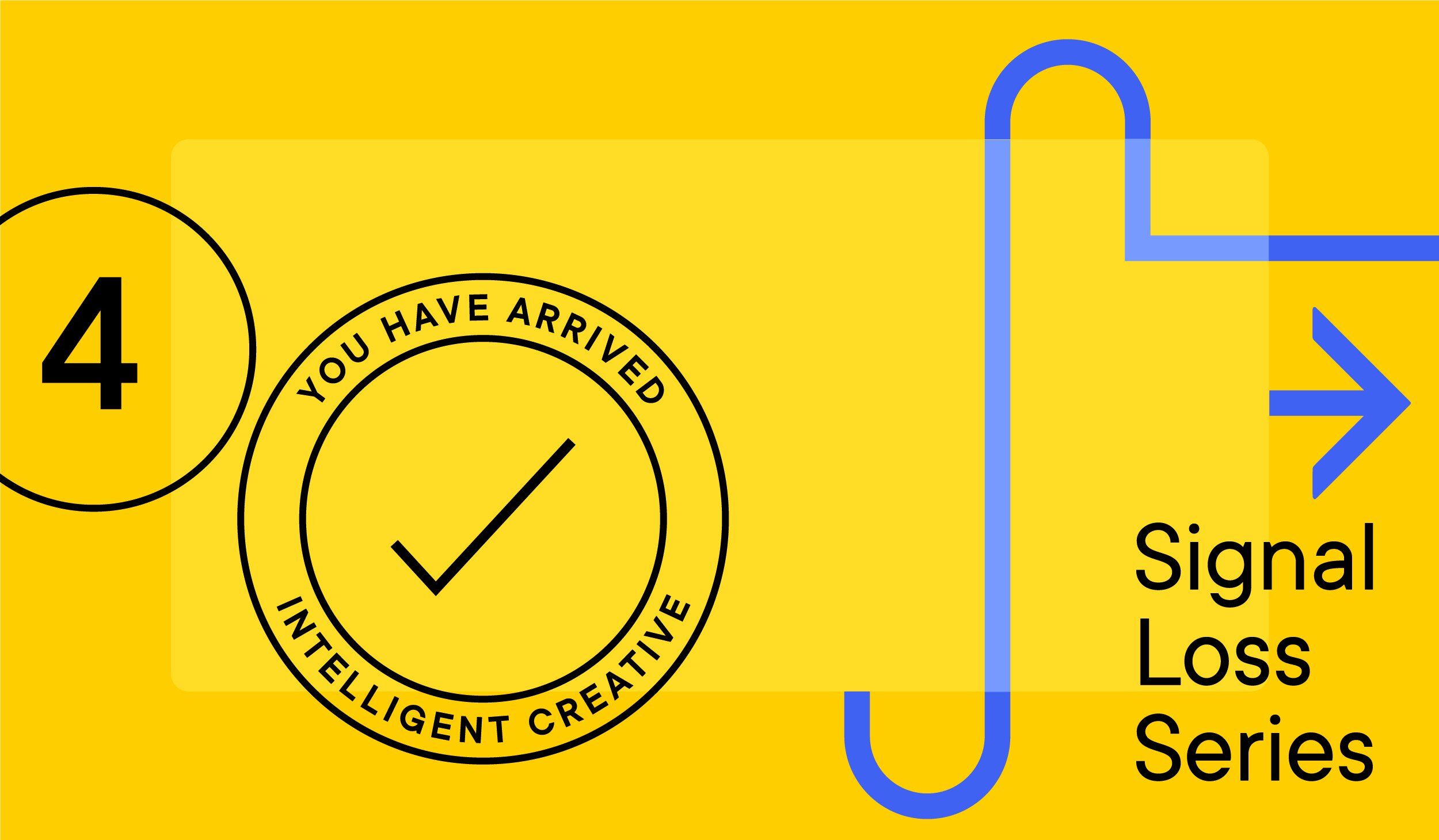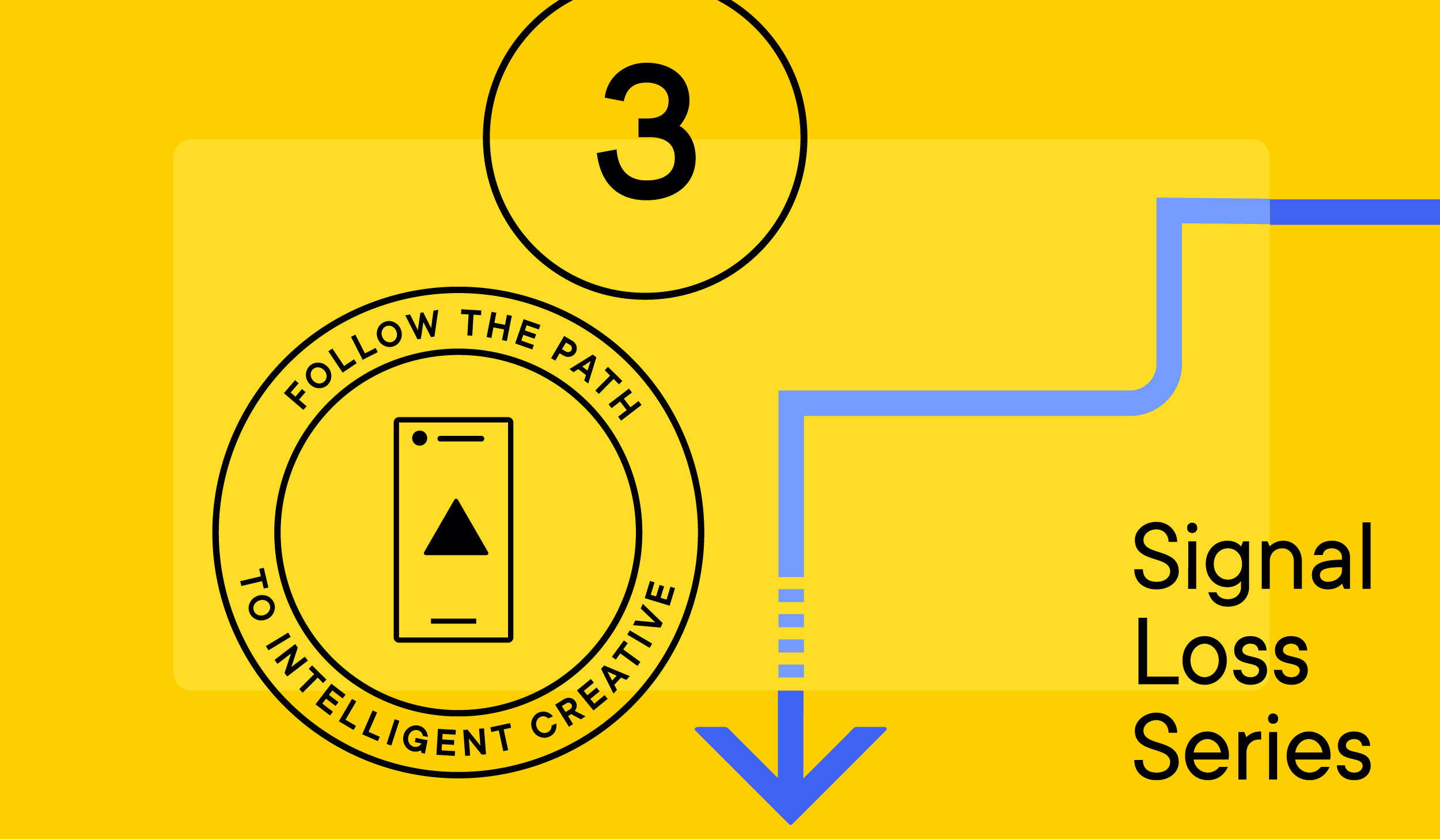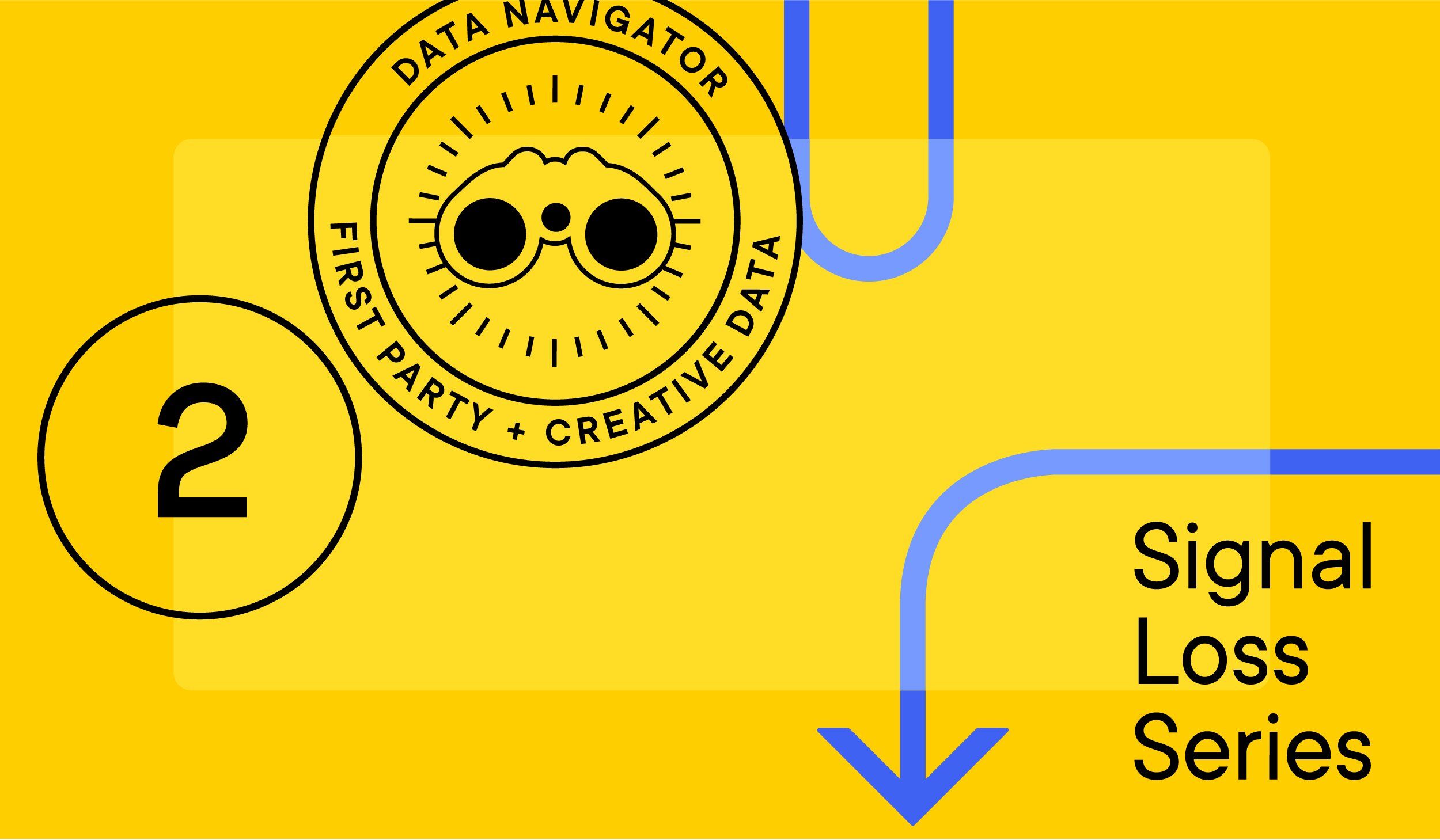New to the Party: The Rise of Creative Data
This is the third in a series of posts where we explore key themes from The Essential Guide to Signal Loss for Digital Marketers.

In this series exploring key concepts in The Essential Guide to Signal Loss for Digital Marketers, we’ve seen how global privacy regulation and policies have changed how advertising works. At the same time, AI-powered technology has given rise to a new kind of first party data, known as Creative Data. That data provides marketers with a new end-to-end solution to managing creative performance.
Here, we explore how Intelligent Creative—the outcome of working with Creative Data—is helping brands to make more impactful advertising decisions.
For the past decade, advertising has been about trying to reach a specific person on a specific channel at a specific moment. While that might have worked for a while, it resulted in some unintended consequences.
First, it paved the way for a privacy policy revolution in the form of stricter global regulations, and sweeping technology updates by the world’s advertising giants. Second, it left consumers feeling hounded by all-seeing ads, and also incentivized advertisers to favor targeting over the true driver of advertising performance – the ad creative. Now, all that’s set to change.
With fewer audience signals to go by—tied to the deprecation of IDFA and third party cookies— and more stringent privacy regulations being enacted around the world, the ability for performance advertisers to target and personalize ads based on user behavior is set to become a thing of the past.
But rather than being the end of advertising as we know it, these changes are paving the way for marketers to shift their focus back to what mattered all along: crafting ads with emotional resonance that perform well as a result. Creative has always been the marketing lever with the biggest impact on Return on Ad Spend (ROAS) so naturally it makes sense to view creative and its associated data as the real opportunity for campaign optimization going forward.
The outcome of creative analysis and data, sophisticated digital marketers like Ulta, ABInBev, and Birchbox have used Intelligent Creative —also known as data-informed ads— to great effect. To get there, they saw technology as integral to the creative process, and data as integral to ad design.
When Ulta applied creative insights to fine-tune Facebook ads for their Sugar Rush cosmetics line, they saw a 2X lift in ROAS. When Birchbox used creative intelligence to optimize their YouTube ads, they achieved an 86% reduction in Cost per Acquisition, which had a dramatic impact on ROI.
Unlike traditional ad tech, creative intelligence tools don’t rely on third-party data, but a new kind of first-party data, called Creative Data. That makes them safe to use in an era of increasing data restrictions and Signal Loss. And it can help brands zero in on the visual and audio details in ads that drive desired outcomes like clicks, views and purchases, and use them to manage performance.
As creative data shows, seemingly minor creative decisions —like a wallpaper pattern applied in the background of an ad, the speed of a Swipe Up arrow, and the direction of a model’s glance— can have a major impact on how consumers respond to an ad.
Digital marketers are using creative intelligence technology to optimize what and how copy is presented in ads, along with every other creative attribute.
In a recent analysis of 8,300 holiday ads that ran on Facebook during the 2018-2019 holiday season, VidMob found ads that opened with text were 46 percent more effective at driving purchase conversions than ads with no text in the opening scene. While each brand has its own unique path to creative performance, these results suggest marketers can benefit from conducting similar analysis to identify the details that resonate most with their unique audience.
Ultimately, Creative intelligence is useful because it gives marketers actionable insights that tie in directly to ad performance for each campaign, ad format, objective, and brand. That’s a golden opportunity to reach audiences in an era of increasing privacy regulation, and regardless of what happens to third party cookies, pixels, and data.
So while digital marketers go in search of new tools to compensate for Signal Loss, they can rest assured that the most powerful tools —those that measure creative performance— are readily available.
Audience targeting may become a thing of the past, but Creative Intelligence is already lighting the path forward.
Learn more about how Creative Data and Intelligent Creative can help digital marketers today, and how Signal Loss is changing the marketing landscape in The Essential Guide to Signal Loss for Digital Marketers.

This is the third in a series of posts where we explore key themes from The Essential Guide to Signal Loss for Digital Marketers.

This is the second in a series of posts where we explore key themes from The Essential Guide to Signal Loss for Digital Marketers.

In some ways, the pandemic created a more level playing field for small and medium-sized businesses (SMBs). Often faced with the need to pivot amid...